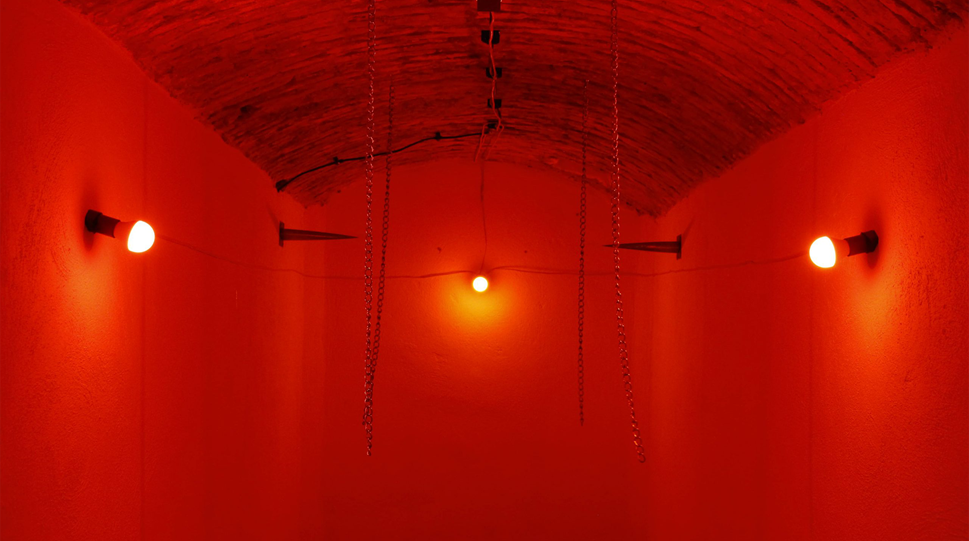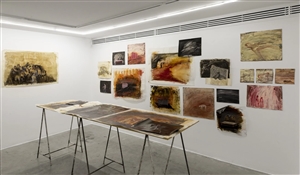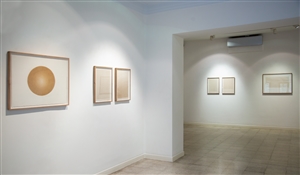"Peacock's Excuse" by Hamid Shams
22 Aug 2022Original text in Farsi by Amir Esfandiari
Translated to English by Omid Armat
If you are a general man, look at the whole
Demand the whole, be the whole, choose the whole
"The Conference of the Birds, by Attar / The Story of the Peacock"
Pejman Foundation: Kandovan Building hosted "Peacock's Excuse," an exhibition of works by Hamid Shams, from February 4 to April 20, 2022. This was Shams' first solo show at Pejman Foundation. It was curated by Marie Canet and directed by Reza Hassani. Hamid Shams (b. 1990, Tehran) lives in Paris and has graduated from the department of film and photography at Ecole Nationale Supérieure des Arts Décoratifs.
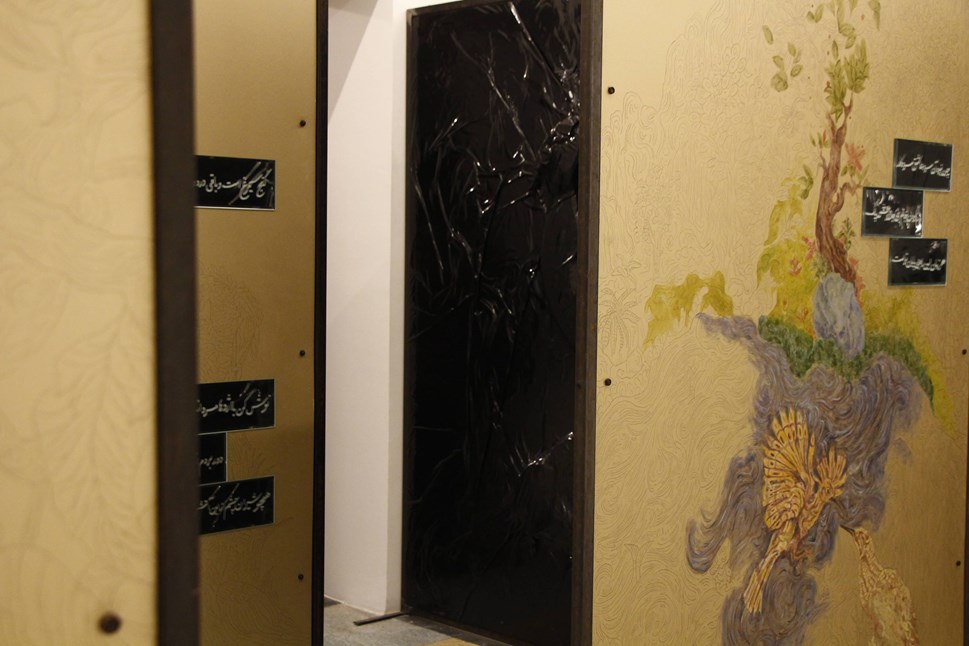
Hamid Shams | Installation view of the “Peacock’s Excuse” at Kandovan building | Source: www.pejman.foundation
"Peacock's Excuse" includes a vast arrangement of Shams' works executed and installed in different rooms and floors of the Kandovan building. A wide range of works, including paintings, reliefs, chairs, beds, chains, etc., has shaped the place alongside special lighting with lamps emitting red and green lights. The artist has also tried to make the pieces interact with the interior space and architecture.
The show attempted to find its way in presenting its unique way of expression in regard to the Conference of the Birds, a famous poem by the Persian poet and theoretician of Sufism Farid ud-Din Attar of Nishapur, with particular attention to Persian miniature painting. Upon entering the building, we face a winding corridor meant to remind visitors of a small maze while artworks are installed on two sides. On one side, we see works influenced by Persian miniature painting; on the other, there are black reliefs resembling birds' anatomy covered in a vinyl-like black resin. We continue to see works toward the end of the corridor, which leads to the lower floor, where two long chairs are installed near a small fountain and an Iranian carpet. There is a hospital bed on the other side. The fountain and the bed are covered in black, reminding us of the black resin of the reliefs in the corridor. In a small room at the end of the building, we see metal chains hanging from the ceiling. The installation presented on this floor has dim lighting dominated by red and green lights. A strong smell of resin has filled the entire building. The works are also designed to be consistent with the building's historical structure and nested architecture. Besides the installation, a statement is presented by Marie Canet in which she referred to a text by Farid ud-Din Attar and mentioned the creation process of Shams' artworks.
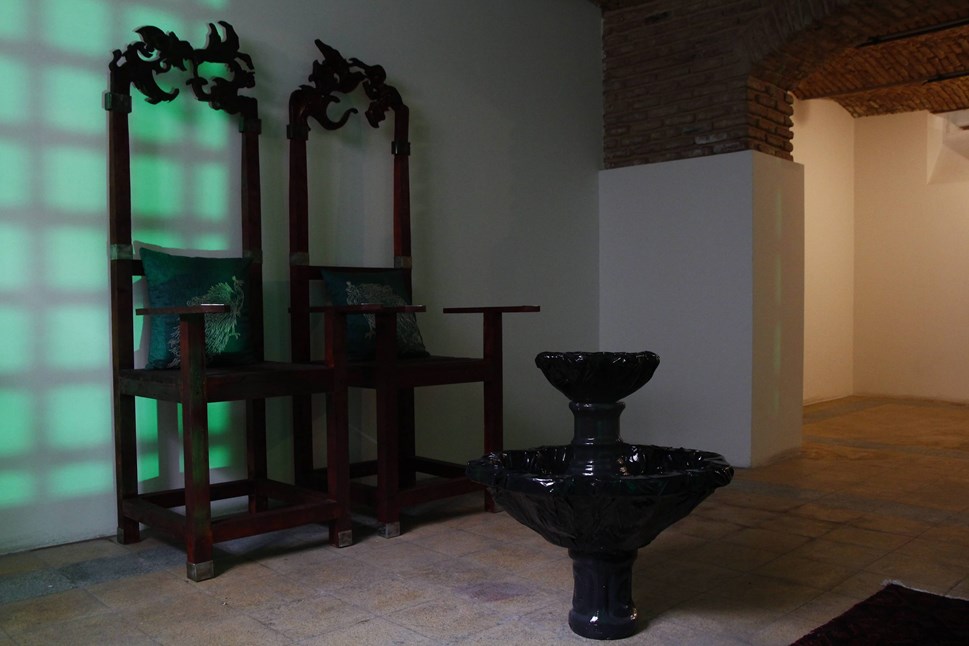
Hamid Shams | Installation view of the "Peacock's Excuse" at Kandovan building | Source: www.pejman.foundation
In this show, Shams tries to address issues such as human relationships and violence by arranging harsh elements like chains, a bed covered with black resin, and metals accompanied by Persian literature and art. This has been present imperceptibly in some works of miniature painting from previous centuries. However, there is a distance; Shams has created these harsh tools and atmosphere in an installation, not depicting them as they were in miniature paintings. This distance that indicates the passing of time and the difference in the artist's approach has led to different outcomes from two, maybe similar demands. It may have resulted in an exotic appearance. The mentioned issues are, in some cases, executed well in this show, but they practically put the "Peacock's Excuse" in the cycle that reproduces the prevalent stereotypical attitude toward ancient Iranian art and Eastern cultures, perceiving them as strange and mysterious objects of interest for exploration. This may be ignored amid the show's aggressive, frightening, and sometimes powerful atmosphere and may serve to form such attractions.
Shams and the "Peacock's Excuse" bring the viewer into an adventurous labyrinth that looks for a link between the past and the present. It also seeks to review an ancient story by changing its context and removing its narrative. Nevertheless, the labyrinth has sometimes gotten out of control and has narrated its own story.
Cover and slider image:
- www.pejman.foundation



